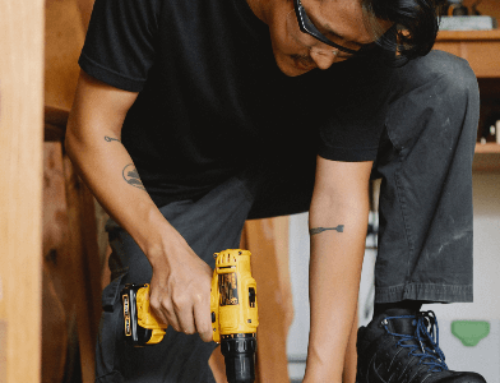If you’re looking to buy a new home, you’ll want to take every measure possible to ensure that it’s fit for purchase before making anything official.
Just as you would when buying a secondhand car, you wouldn’t simply take one glance and throw a pile of cash in the general direction of the seller. There’s always going to be the chance that something is not quite right, and as the responsible consumer that you are, you’re going to make sure that you do your investigating before any commitments are made.
It’s always going to be essential that you have any home professionally inspected before buying if you want a comprehensive understanding of the true state of the property, but that doesn’t mean that you can’t do your bit.
If you’re up for some defect sleuthing before you bring in an expert, then here are the main things you’ll want to look out for:
Check the plumbing
The best way to go about this is by simply turning on the taps. Don’t be shy now! Every single tap you see is fair game. Assess the water pressure and whether or not the water drains quickly and easily. Is the water clear or murky? Does the water flowing through pipes sound normal? One of the best things you can do when inspecting a property is to ask a lot of questions. The agent or seller should know about the current maintenance of the plumbing, if there has been any issues, or when the hot water system was last serviced.
Check for mould
This is something you don’t want to miss as it could be a crucial indication of water damage. Depending on the cause of the mould, this could end up costing you a significant sum in repair costs and is not something you should just brush aside. More often than not, you will be able to smell the mould before you see it, and in many cases it may not even be visible. Since mould is generally found in damp places with inadequate ventilation, it might be hiding in the roof, under the floorboards or between the walls. So be sure to follow your nose with this one.
Look for water damage
Water damage is not a fun defect to rectify. You will usually find that it shows up as a staining on the walls, ceiling or floor, and can often cause paint to peel and bubble. As with mould, water damage will most often be accompanied with a very musty smell and should be noticeable even if some sneaky seller has tried to cover their tracks by painting over the damage to make it less noticeable.
Check for dodgy wiring
The electrical safety in an old home will depend entirely on the maintenance that has been upheld over the years. A lot of owners fancy themselves a regular old sparky and have never once bothered bringing in an electrician. This can result in the need for some serious electrical repair jobs which are not going to be cheap. Check to see if all the lights are working and double-check with the agent or seller about the last time they had someone in to service the heating and cooling or any other electronic devices that require occasional maintenance.
Look for termite damage
Termites are sneaky little things, and not something you’ll generally notice unless you’re specifically looking for them. Although it’s always important to get a pest inspection to be completely sure, there are some tell-tale signs you can look out for. Termites will usually leave tiny pinprick holes where they burrow out of the wood and will often leave damaged and crumbling wood in their wake. Wooden beams, door frames, etc. that have been eaten away will sound hollow when you tap on them, so check around the property for signs of this.
Does the property contain asbestos?
Asbestos is notoriously difficult to detect and not something you can spot unless you know exactly what you’re looking for. Furthermore, it also isn’t something you want to investigate on your own since asbestos fibres can be lethal, but if there’s any chance that the property you’re inspecting was built prior to 1992 commonly using asbestos materials, then you’re going to want to know about it. The easiest way you can find out is to outright ask the agent or seller if they’re aware of the presence of asbestos within any area of the house or additional structures on the property. However, the only way to find out for sure is to have a professional perform an asbestos inspection. This truly is a time that it’s better to be safe than sorry.
Check outdoors
Potential defects with the property don’t end once you leave the house. Some of the biggest red flags can be found once you step outside and view the exterior. For instance, look for any rusting of the pipes and check the gutters for leaks or any potential for blocked drainage. Ask the agent about whether there is any concern for flooding when winter rolls around, since this could cause serious issues with water getting trapped under the foundations of the house.
Once you’ve done your own sleuthing, give Building Masters a call for a highly thorough and professional pre purchase house inspection by one of our independent expert inspectors. Let us know your concerns and we’ll give you a complete breakdown of everything we’ve found. We’re known for giving professional and straightforward advice without the jargon so you know exactly what you’re dealing with. No matter where you go, you can have peace of mind knowing that Building Masters is here to help you find your forever home.







Leave A Comment